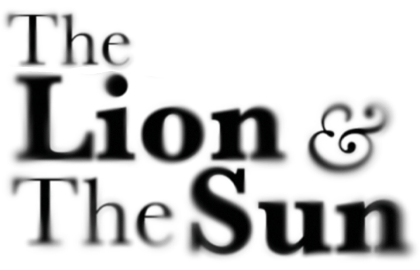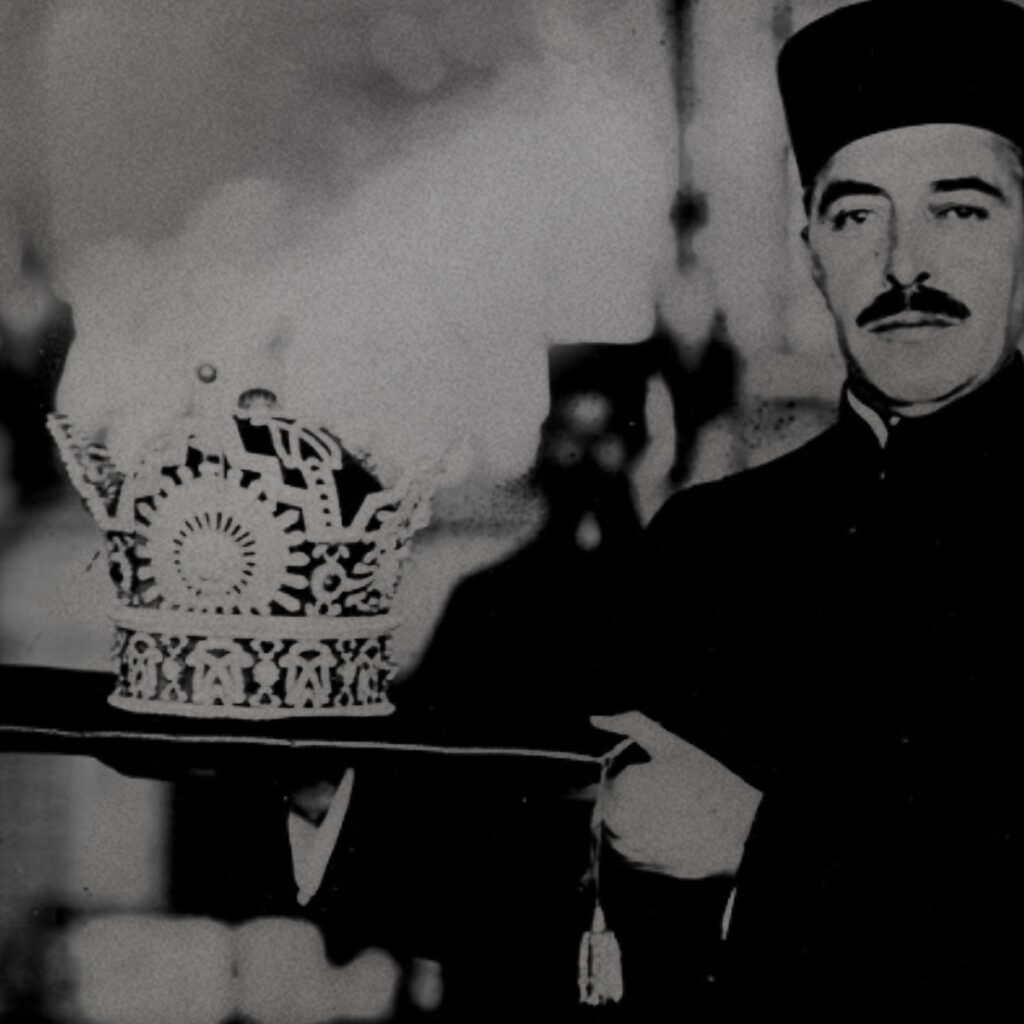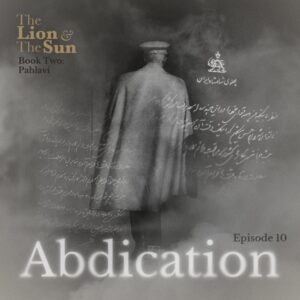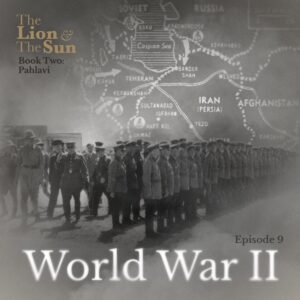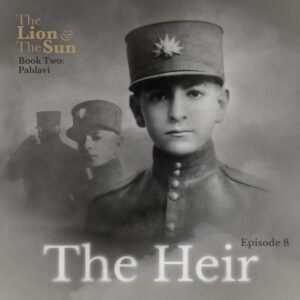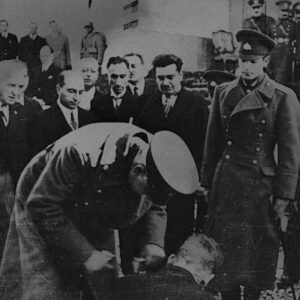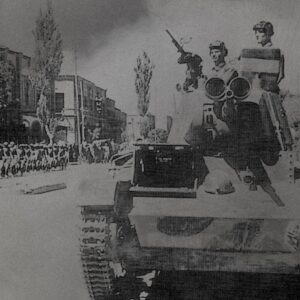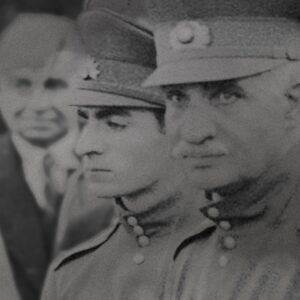The Pahlavi Crown is one of the most iconic artifacts of Iranian crown jewels. It was designed and crafted in the early 20th century. The crown was used during the coronations of Reza Shah and his son Mohammad Reza Shah, symbolizing their link to Iran’s imperial past.
With its intricate design and heavy influence from Sasanian and Achaemenid motifs, the Pahlavi Crown represents a deliberate attempt to reinforce a sense of national identity through historical continuity. Today, it remains a significant piece of Persian royal regalia, housed in the Treasury of National Jewels in Tehran.
Origins and Historical Context of the Pahlavi Crown
Following the deposition of the Qajar dynasty in 1925, Reza Shah Pahlavi sought to establish a new symbol of monarchy. Hence why he wanted the symbol to be distinct from the Kiani Crown, the coronation crown used by the Qajars. He refused to use the Kiani Crown for his coronation, opting instead to commission a new crown inspired by pre-Islamic Persian heritage.
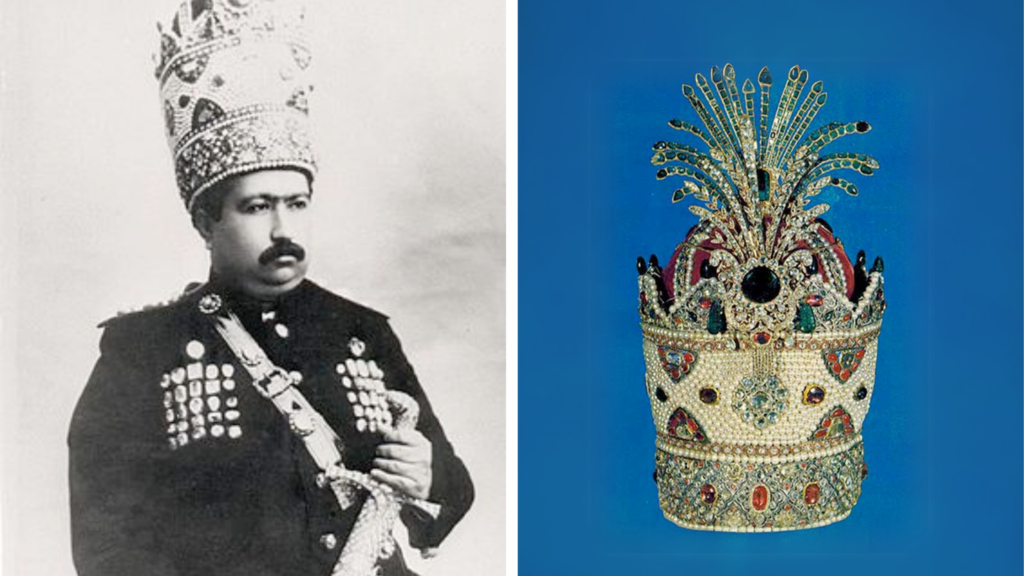
To achieve this, Reza Shah tasked a team of Iranian jewellers, led by Haj Serajeddin Javaheri, to design and craft the Pahlavi Crown. Jewelers completed the crown in 1926, just in time for Reza Shah’s coronation ceremony on April 25, 1926, held in the Golestan Palace.
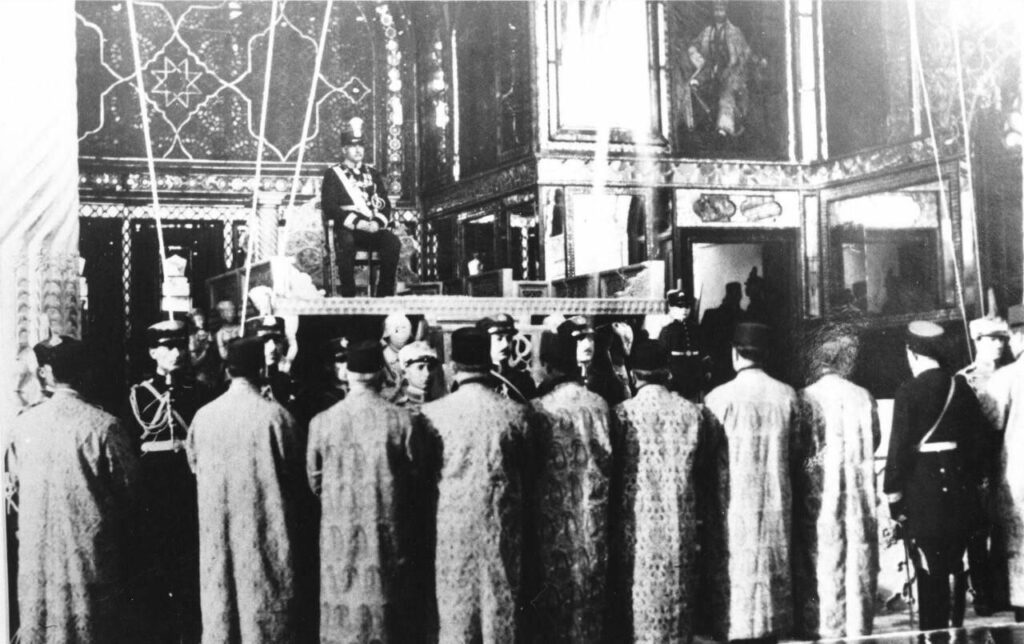
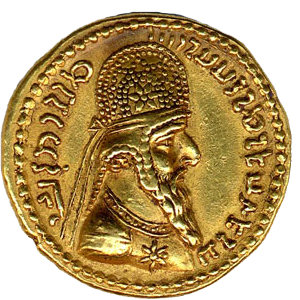
Reza Shah did not base his dynasty’s legitimacy on tribal affiliations, as the Qajars had done. Nor did he claim religious connections, like the Safavids. Instead, he positioned himself as the patriotic son of Iran, embodying the spirit of emerging nationalism.
This shift in dynastic legitimacy was reflected in the Pahlavi Crown’s design. The crown incorporated key Sasanian royal symbols, emphasizing continuity with Iran’s imperial past.
Design and Symbolism of the Pahlavi Crown
The Pahlavi Crown took direct inspiration from Sasanian royal crowns, incorporating four stepped crenellations that resemble Achaemenid scaling-up motifs. These crenellations were a common feature in Sasanian crowns, symbolizing the connection between the divine and the ruler. The central motif of the Pahlavi Crown is a sunburst emblem, representing Mithra, the ancient Persian sun deity.
Materials and Precious Stones Used
The Pahlavi Crown is an exquisite work of jewelry, adorned with:
- 3,380 diamonds totalling 1,144 carats
- A 60-carat yellow brilliant diamond placed in the center
- Five large emeralds totalling 200 carats, the largest weighing 100 carats
- Two blue sapphires, weighing 19 carats
- 369 natural white pearls, arranged in three symmetrical rows
The base of the crown is made of gold and silver, with red velvet lining the interior. The crown has a height of 29.8 cm (11.7 inches) and a weight of 2,080 grams (4.58 lbs).
One of the most striking features is the gold-plated foundation beneath the sunburst. Jewellers encrusted the crown with diamond-studded lotus motifs, a symbol frequently used in Sasanian and Achaemenid art. Artists also carved this ornate floral pattern into ancient Persian engravings at sites like Persepolis and Naqsh-e Rustam.
At the top of the crown, a feather-shaped aigrette is affixed, reminiscent of the plumes worn by Sasanian rulers after military victories. In Sasanian royal iconography, wings atop crowns symbolized Bahram, the god of war and victory. This motif was often added to the crowns of kings following successful campaigns.
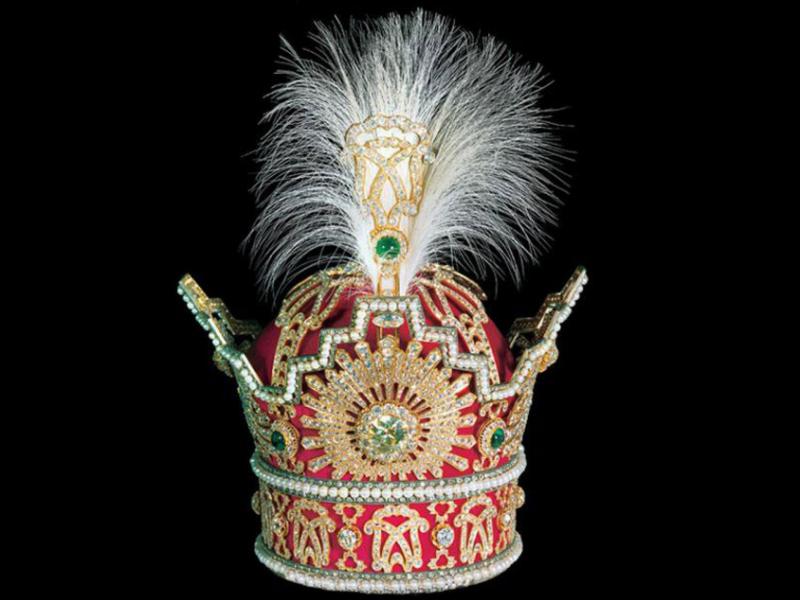
The Pahlavi Crown in Coronation Ceremonies
During Reza Shah’s coronation, Abdolhossein Teimurtash, one of the most influential figures in his administration, carried the crown into the hall. Afterwards, Teimurtash and a high-ranking cleric presented the crown to Reza Shah, who then placed it on his own head. This was a break from traditional coronation practices that emphasized religious authority in the crowning process. You can hear the full story of Reza Shah’s ascend to the throne in book two of The Lion and the Sun Podcast. Listen to this season on Apple Podcasts, Spotify or all other podcast platforms.
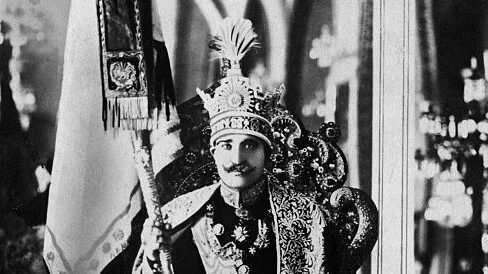
In 1967, during the coronation of Mohammad Reza Shah Pahlavi, the Pahlavi Crown was used again. This was the final time it was ever worn. The elaborate ceremony featured numerous Iranian crown jewels, including the Kiani Crown, swords, seals, and sceptres, symbolizing royal authority.
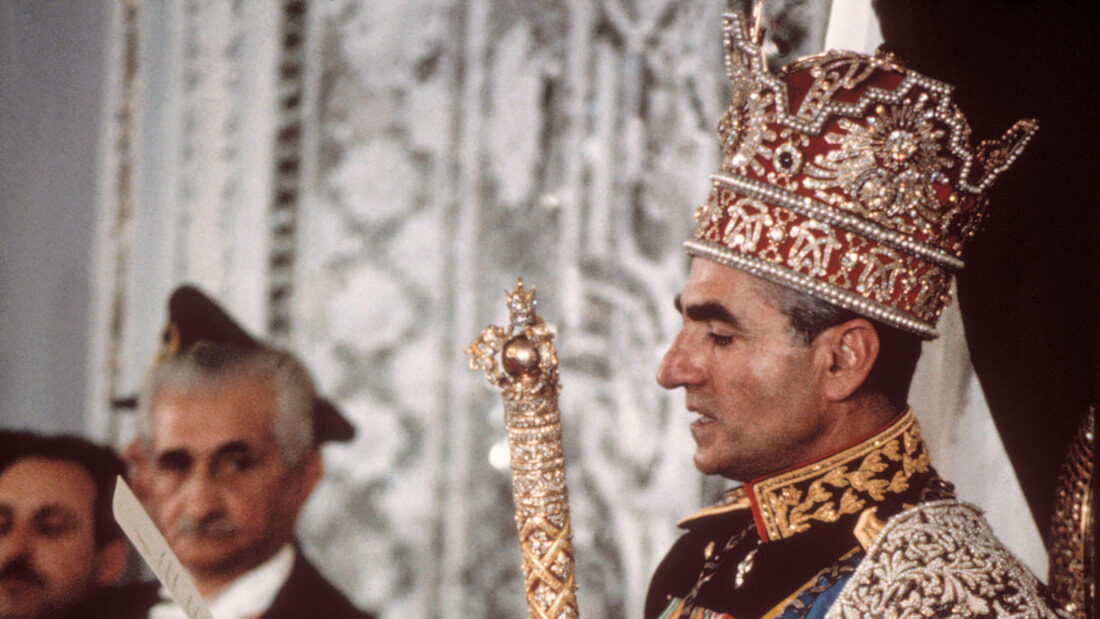
Foreign dignitaries and diplomats attended the coronation, with many describing the ceremony as a blend of grandeur and simplicity. British ambassador Loraine remarked that the event was “economical, not unimpressive, and short”. The American journalist Vincent Sheean described it as “a skillful mixture of magnificence and simplicity”.
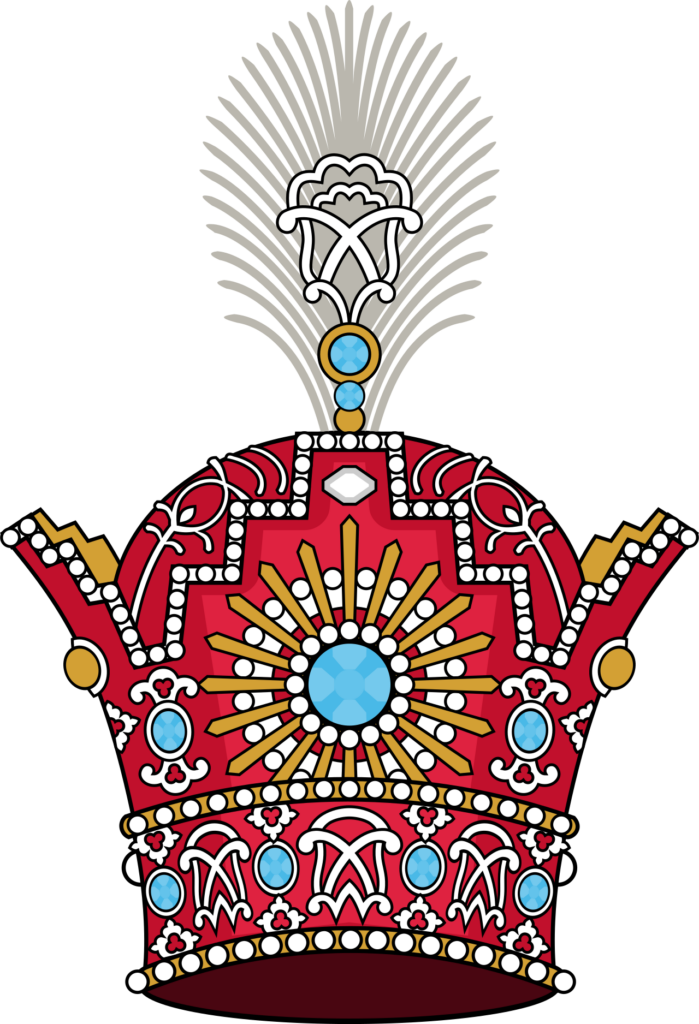
The Aftermath of the Pahlavi Crown: The Fate of Iran’s Royal Regalia Post-1979
Following the 1979 Iranian Revolution, the Pahlavi Crown and other royal regalia faced an uncertain future. With the monarchy abolished and Iran declared an Islamic Republic, the symbols of Persian royal authority, including the Pahlavi Crown, the Kiani Crown, and the Naderi Throne, became relics of a bygone era.
In the final days of the Pahlavi regime, as Mohammad Reza Shah and his family fled Iran, there were rumours that they had taken some of the Iranian crown jewels, including the Pahlavi Crown, with them. However, the Iranian government has repeatedly denied this claim. Officials have stated that the crown remains in Iran and is still housed in the Treasury of National Jewels at Tehran’s Central Bank.
In 2023, Iranian authorities released photographs of the Pahlavi Crown, confirming that it had never left the country.
